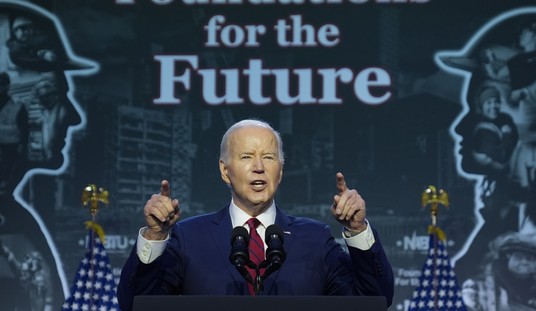[Guest post by Terry R. Lacy, whose new book Savanna 1.0: The Quest for Love is coming soon.]
Archaeologist Indiana Jones has to get the Ark of the Covenant before the Nazis. He wins the treasure and the girl.
Twenty-one words. The concept is simple enough and one of the many assignments I had to master in grad school. It’s based on the simple idea that—according to some psychological study somewhere—if you meet a stranger, you have twenty-one words to get them interested in your idea. That’s whatever you’re selling, and we’re all selling something, from an insurance policy to a novel I want you to read, to a pleasant conversation in an airport lounge, it’s all one big sales pitch. If you hook them in 21 words, they continue to listen. If you don’t, they tune you out—their minds go elsewhere.
Now before you decide this is stupid, think about it. It’s the elevator pitch, only shorter. You don’t have an entire elevator ride—you have a sentence—maybe two—before your audience decides if you are worth their time. If that sounds mean, it’s a mean old world out there—and in the faceless world of the internet, it’s only getting worse.
My friend and colleague, Sarah Hoyt, (and the person who does all of my covers, and I can’t thank her enough) posted an article a few weeks ago about Writing Better Blurbs (SARAH’S LINK HERE). [Here it is, “Book Plug Friday! Selling Books is Hard. Bad Blurbs Make It Harder.“. Jeez, you people are so picky. —Charlie]
It’s an amazing article, and in fact, some of the points she makes are so good, they need to be said again. From here on, anything in quotation marks, I stole from her:
“A blurb is a selling tool. Its purpose is to make the reader want to read/buy the book.” It’s a hook—it’s a sales pitch. It’s the icebreaker—a good pickup line in a crowded bar. All too often young writers—and by that I mean inexperienced writers, whether they are 19 or 90—say things like~~The reader is going to have to be patient.~~
No—they don’t. The reader doesn’t have to buy your damned book. Whether it’s on a bookshelf in a store or a thumbnail on Amazon, there are a million more that have intriguing blurbs, and they will click on one of them, and spend their hard earned money on one of them, instead.
“If he has to click read more to be sold on it, you might lose him.” I’m going to take this one step further. If he has to click more to get the gist, you WILL lose him. TLDR—Too Long, Didn’t Read. It’s used so often there’s an acronym for it. It’s not that the people didn’t want to read it because it was too long—we are talking about someone looking to spend money on a novel of about 100,000 words, after all. It’s not the reading that bothers them. They didn’t want to read it because it wasn’t intriguing. And they—rightly so—believe that if you can’t write a decent blurb, the chances of you writing a decent novel are just as slim.
So we had to write those twenty-one words and turn them in. We couldn’t turn in 22—nor could we turn in 20. Twenty-one exactly, no more, no less. Nothing else would be accepted. So let’s take another look at Indy.
— Archaeologist Indiana Jones has to get the Ark of the Covenant before the Nazi’s. He wins the treasure and the girl.
It’s good, and if I was selling the movie idea to a producer, it’s exactly what I want. They want the full story. But it’s not good for a blurb because it gives away the end. So—let’s tweak it a little bit.
— Archaeologist Indiana Jones has to get the Ark of the Covenant before the Nazi’s. Will he win the treasure and the girl?
Okay, now it’s 22 words, and maybe I fail the class, but it still works. It’s a hook, and it serves the only purpose it’s supposed to—it makes you want to read the next sentence. It makes you curious and curiosity might kill cats, but it also sells books.
Let’s look at another one I wrote for class for a book I have never written and probably never will.
— Last night, Gene “Three Fingers” Cluxton lost his five-star restaurant in a rigged poker game, and he wants it back.
“Last night”—creates immediacy.
“Three Fingers”—implies the mob.
“Five star”—raises the stakes.
“Rigged”—he was cheated. Maybe he was stupid for risking it, but it makes him somewhat sympathetic.
“He wants it back.”—we know what the story is going to be about.
From there, you can add a little more, but not a lot. Think 3-4 sentences to broaden the idea, remembering to not give away the ending. But first, come up with your 21 words.
I remember the first time I was given this assignment. I started with 50 words and cut it to 30—but I couldn’t get it lower. There was too much I needed to say. My instructor smiled and told me that my problem was I didn’t know my story well enough. And he was right. Once I finished the book—and by that I mean polished it so much the thought of reading it again made me physically ill, the 21 words were easy.
Which leads me to my last Sarah quote:
“In either case, ask your beta readers to give you the high points about the book. Then do a blurb.”
There is a reason a novelist is never hired to write her own screenplay. Novels should run around 300 pages—a screenplay should run 90. When we try to write our own screenplays, we want to put in everything that’s important—and everything is important to us. It’s our words—our baby—how can we expect to leave anything out?
Ask your beta readers what the important parts are and listen to them. Then sell me your novel. You have 21 words to close the deal.
Write hard.
[Sarah:] Okay, Charlie and I have run out of books to promo (but not out of interviews. I’m just out of time to format and edit the next one in line today (Look, I was painting the living room, okay. And I still have all that editing work to do and copy-edits to check)). So, send your book plugs to [email protected].
You don’t need to beg, you don’t need to grovel. You do need to send us an Amazon link, which many people forget after groveling and betting (what’s with people, anyway!) Oh, and if your book blurb is more than about 50 words, send us one that length. You see, we have interviews to run, posts do better with instructional articles, and we still want to run three or four of your books a week.
Now go write, and send us those links.
 FROM DAVID GUENTHER: Zombie Airman
FROM DAVID GUENTHER: Zombie Airman
The night of the plague follows sunset on April Fool’s Day around the world. By sunrise, less than fifteen percent of the world’s population is uninfected. The airborne disease is invulnerable to any air filter or disease barrier. The fifteen percent uninfected are still vulnerable to the disease when spread via bodily fluids as the infected seek to spread their disease. These are the stories of those just trying to survive.
Airman First Class Caleb White, dorm rat, burned out on monitoring computer displays eight hours a day in a small cubicle in a large cubicle farm. His few interests off duty, bar hopping, taking care of his beloved truck, and managing to find trouble. A spur of the moment decision sets him up for a night of adventure and more excitement than he ever had in the Air Force.
 FROM BLAKE SMITH: The Flight of Miss Stanhope
FROM BLAKE SMITH: The Flight of Miss Stanhope
Marianne Stanhope is in trouble. Her family is urging her to accept the attentions of a most odious suitor, so she turns to a gentleman of her acquaintance for aid. But Mr. Firth has his own reasons for assisting Miss Stanhope, and it falls to her childhood friend Mr. Killingham to convince her that she’s made a dreadful mistake.
 FROM MARGARET BALL: An Annoyance of Grackles (Applied Topology Book 3)
FROM MARGARET BALL: An Annoyance of Grackles (Applied Topology Book 3)
Problems come not as as single corvids, but as full flocks…
Life at the Center for Applied Topology is never precisely normal, but Thalia Kostis, Brad Lensky and their coworkers have been enjoying a brief run of peace, quiet, and optimizing the theorems that allow for teleportation and camouflage. Everything is within parameters, until they get saddled with an intern who’s convinced that he’s God’s gift to math and that their applications of topology are illusory.
A rebellion is brewing – but bigger problems are afoot. Their old enemy, the Master of Ravens is back, and has teamed up with a mercenary with a grudge over the Center’s recent disruption of a profitable contract. Together, the two are planning on taking out the Center – and everyone in it!
 FROM ARLAN ANDREWS: Silicon Blood
FROM ARLAN ANDREWS: Silicon Blood
In the near future, the drug cartels of South America establish their own criminal nation, Cordillera, and proceed to flood the world with cocaine and political corruption.
America responds by using the new science of nanotechnology to produce microscopic machines – “nanobots” – to eradicate such drugs once and for all. But these tiny devices can also be used to create new kinds of drugs inside a human body – a “pharm” — or to devour it from within.
After a catastrophic nano-plague, a new and powerful drug lord, El Hombre – “The Guy” – uses nanobots to set up a worldwide drug ring, harvesting new drugs from human bodies and enforcing obedience with threats of devourment.
Jerry Gade, a nano-engineer with a horrific secret, fights back.
The struggle between Gade and The Guy takes place in both the human domain and in the invisible world of their own nano-creations.
The outcome of their battle will determine the future of the human race.








Join the conversation as a VIP Member